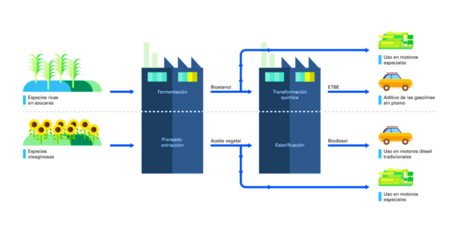
Full time Professor
Bioengineering Department
INTRODUCTION
It is observed in scientific congresses, calls for projects and scientific funding entities, that the most attractive scientific research tends to be those that study critical topics, and that other topics attract even more attention because they are “in fashion”. Noting this fact, a renowned scientist recently opined that “biomechanics is underappreciated compared to other areas when it comes to being valued by the scientific community”, and although its study is permanent and relevant in science, academia and the clinic, it could be true that its area of study is neither critical nor “it is trendy”. The question arises: is biomechanics really relegated? To understand its importance, this text reviews the concept of biomechanics and its main areas.
To understand the concepts and topics studied by biomechanics, it is necessary to establish that this science is one of the several disciplines that bridge the medical and biological sciences with engineering, a bridge of knowledge commonly known as biomedical or bioengineering.
In turn, among the engineering disciplines, mechanical engineering stands out as a discipline that uses knowledge of physics and mathematics to analyze mechanical systems. The etymology of the word “mechanics” is associated with the movement and rest of bodies under the action of forces, as established by Newton with his laws of motion. This means that mechanical engineering uses Newtonian laws to analyze mechanical systems, studied theoretically as particles, rigid bodies, or a combination of these. Such mechanical systems possess characteristics of their own nature such as density, composition, mechanical properties, etcetera.
Mechanical engineering integrates this knowledge in three areas: mechanical design (statics, kinematics, kinetics and solid mechanics), materials science (engineering materials, forming and manufacturing processes), and thermal and fluid sciences (thermodynamics, heat transfer and fluid mechanics). In the space where these areas are extrapolated to the medical and biological field, biomechanics and its specialties appear.
Although there are as many definitions as there are authors explaining what biomechanics is, they all converge in describing it as the study and analysis of the bodies of living beings, especially the human body, from the application and knowledge of Newtonian mechanics.
From the clinical point of view, biomechanics is a preventive and not a traumatological area [1]. This means that it has sufficient pathological knowledge and the best resources available to find efficient and effective solutions to implement in clinical practice, attending cases with high social and economic costs, such as fractures, amputations, injured tissues, among others. Thus, experimental techniques, computational models, and design of medical devices for diagnosis and clinical treatments are developed in practice.
Biomechanics has different subdisciplines according to the specific area studied (Figure 1) [2-4]: among the main ones are orthopedic biomechanics, dedicated to the mechanical analysis of musculoskeletal tissues, soft tissue biomechanics, which focuses on the mechanical analysis of soft connective tissues that hold or support other organs of the body, and cardiovascular biomechanics, oriented to the mechanics of the heart, blood and blood vessels. In a second group are other biomechanics considered applications, such as sports, forensic, impact, rehabilitation and motion analysis, computational, animal and plant, ocular, dental and even reproductive. The definitions and areas of work of the main disciplines within biomechanics are discussed in more detail below.
Figure 1. Study of biomechanics [2]
Orthopedic biomechanics studies the effect of forces and stresses on musculoskeletal tissues, analyzed as living structural materials. Its knowledge is used to study the cause, recovery and prevention of injuries and disorders caused by mechanical factors. This biomechanics focuses on bones, articular cartilage and the spine including intervertebral discs. Some researchers include muscles, ligaments and tendons.
Soft tissue biomechanics is dedicated to understanding the effect of mechanical factors on the growth, behavior, remodeling, damage and repair of all those organs and soft connective tissues other than the musculoskeletal system, such as the heart, blood vessels, brain, skin, sphincters, liver, kidneys, among others. As well as the prevention of damage or deterioration of these tissues by mechanical effects.
Finally, cardiovascular and fluid biomechanics studies the mechanics of the fluids present in the human body, seeking to understand their functioning and their effects on the body. Its main subject of study is centered on the cardiovascular system and blood. However, it also studies processes involving air and water, as in the respiratory system and changes in the hydration of the organs of the human body. Its study is mainly based on physical and experimental simulation and prediction models, usually supported by imaging.
CONCLUSION
As can be seen, biomechanics is present and in permanent evolution. Its study is vital to understand the mechanical nature of tissues, organs and body systems, represented in very common problems in the clinic. Many years ago, Professor Rik Huiskes stated about biomechanics that “New knowledge develops new tools and new tools generate new knowledge” [3]. Perhaps by this he also meant that since man found the need to understand the functioning of his body and how to repair or enhance it, he found the knowledge of biomechanics. The simplest example of this is the replacement of lost body segments that were replaced by handcrafted parts (a wooden foot or a glass eye). This vision stimulates the constant proposal of new hypotheses that make the knowledge of biomechanics remain and evolve, showing that it is very current and closely related to scientific progress.
BIBLIOGRAPHY
- Merolli A., 2019. Bone repair biomaterials in orthopedic surgery. En: Bone repair biomaterials, 2nd edition. Woodhead.
- Mow V., Huiskes R., 2005. Basic orthopaedic biomechanics and mechano-biology, 3rd edition. LWW.
- Abernethy B., et al., 2013. Biophysical foundations of human movement, 3rd edition. Human Kinetics.
- Nigg B.M., Herzog W., 2007. Biomechanics of the musculo-skeletal system, 3rd edition. Wiley.




